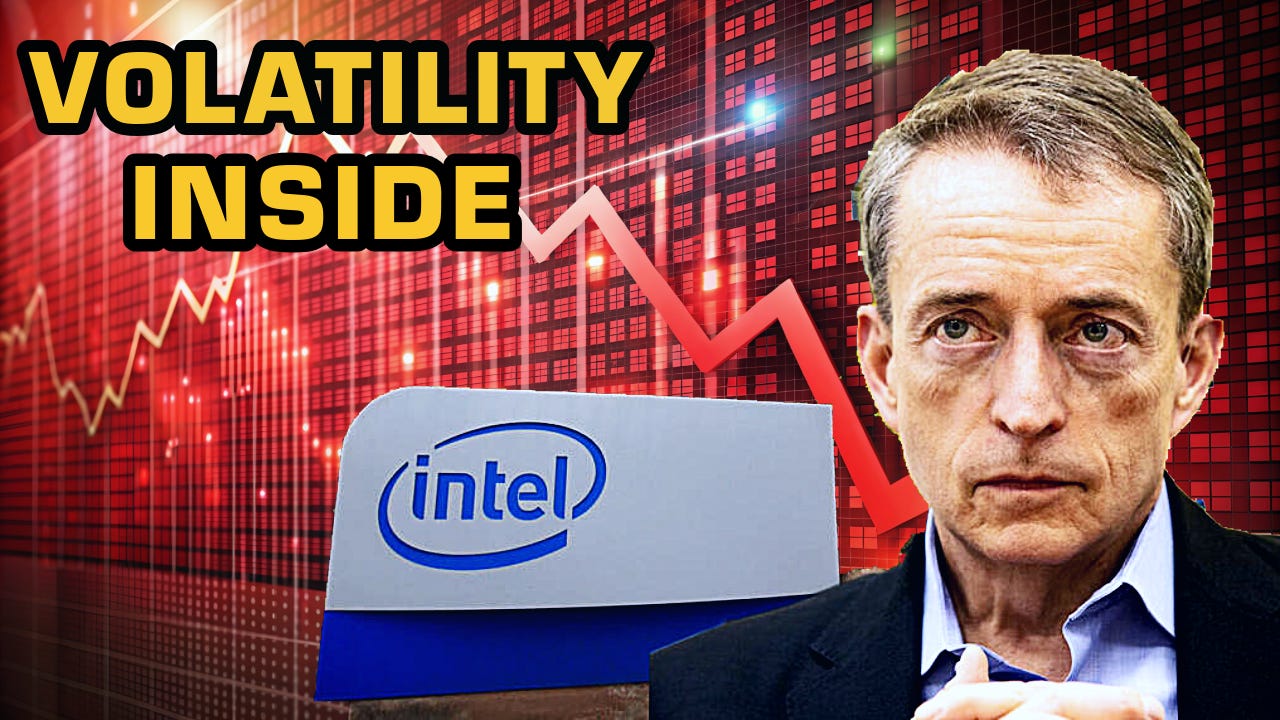Turbulence at INTEL ($INTC) - Is the stock a Buy or Sell?
Performance and Stock Analysis of Intel ($INTC)
Intel has had a mixed few months. The stock jumped 11%, thanks to the buzz around its foundry spin-off and $3 billion in government funding. However, delays to a $30 billion factory investment in Germany and losing the PlayStation 6 chip contract to AMD have set back its foundry goals. Qualcomm's attempted takeover highlights Intel’s financial difficulties, though it raises antitrust concerns. These events show Intel’s struggle between short-term challenges and long-term restructuring. Now, let's dig deeper into Intel’s performance, stock analysis, and future outlook to decide if it's a buy, hold, or sell.
1. Fundamental Analysis (Based on latest Earnings Call and 10-Q)
Revenue and Profitability
Revenue: Intel reported $12.8 billion in revenue for Q2 2024, relatively flat compared to Q2 2023. However, Intel is experiencing challenges in some of its core segments like Data Center and AI (DCAI), with revenues declining 3% YoY due to lower demand.
Gross Margins: The gross margin was significantly impacted, declining to 38.7%, primarily due to the cost of ramping up AI products and a shift to high-cost wafers. Margins may remain under pressure in the near term, especially as Intel continues investing in new technologies like AI and 18A nodes.
Strategic Positioning
Intel is focused on AI and next-gen chip manufacturing, including the Panther Lake CPUs and Clearwater Forest server chips. While this positions Intel well for future growth, these efforts will take time to generate positive cash flow and margin improvement.
Cost-cutting measures, including a planned 15% headcount reduction, are part of Intel's restructuring strategy aimed at improving financial efficiency. The company expects to see benefits from these actions starting in 2025.
Risks
Intel has suspended dividends starting in Q4 2024, prioritizing liquidity and investments in growth strategies like AI. This could deter income-focused investors.
Challenges from competitors like AMD and TSMC in the CPU and manufacturing spaces continue to weigh heavily on Intel’s market share and profit margins. The ongoing geopolitical tensions and export restrictions also pose significant risks to Intel's business in China.
2. Technical Analysis (Based on Stock Price Data)
Recent Price Movements: Intel’s stock price has been in a volatile state, with recent declines from around $35 in September 2023 to around $21.84 by September 20, 2024.
Moving Averages:
50-Day Moving Average: The stock has been trading below its 50-day moving average, which suggests a bearish trend.
200-Day Moving Average: Intel is significantly below its 200-day moving average, reinforcing the long-term bearish sentiment.
Relative Strength Index (RSI): A technical indicator like RSI could provide insights into whether the stock is oversold or overbought. An RSI below 30 would indicate oversold conditions, while an RSI above 70 would signal overbought conditions. The most recent RSI value for Intel, as of September 20, 2024, is approximately 48.79. This indicates that the stock is neither in overbought nor oversold territory, as RSI values below 30 typically indicate oversold conditions, while values above 70 suggest overbought conditions.
Based on this, Intel's stock is in a neutral zone and could move either direction depending on upcoming market factors.
MACD (Moving Average Convergence Divergence):
As of September 20, 2024, Intel's MACD is -0.50, and the Signal Line is -1.03.
Since the MACD line is above the Signal Line but both values are negative, this could indicate a potential upward momentum, although the stock is still in negative territory. A crossover of the MACD above the Signal Line is often seen as a bullish signal, but given the negative values, it suggests that the stock is recovering from a downtrend rather than entering a strong bullish phase.
3. Recommendation
Short-term Outlook: Intel is facing both operational and market challenges, with profitability under pressure due to AI product investments and ongoing competition. The stock's recent declines reflect these challenges, and with no dividends for the near term, the stock may continue to face downward pressure.
Long-term Outlook: Intel's focus on AI and next-gen chips, including the Panther Lake and Clearwater Forest products, suggests that the company is preparing for future growth. However, the returns on these investments won't materialize until 2025-2026, making it a long-term recovery play.
Recommendation: Hold or Sell in the Short Term; Buy for Long-Term Investors
If you're a short-term investor, the stock remains risky due to ongoing financial pressures, and there could be further downside.
For long-term investors, Intel's restructuring and AI-driven growth strategy could make it a buy at these lower levels, especially if the stock continues to decline, offering a better entry point. However, patience is required, as the company will need time to return to sustained profitability.
The decision depends on your investment horizon and risk tolerance.
Subscribe for more in-depth analysis like this. Share your thoughts in the comments below!
Disclaimer: The information provided in this analysis is for informational purposes only and should not be considered financial or investment advice. Investors are encouraged to perform their own research and consult with a financial advisor before making any investment decisions.


